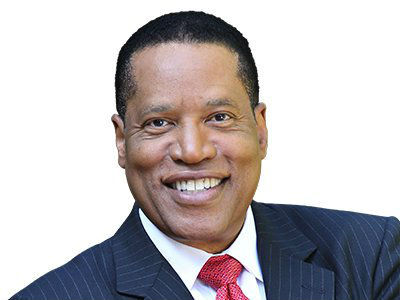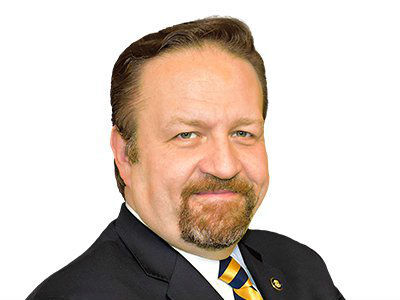Getting beyond answers like ‘fine’ and ‘nothing’: 5 simple ways to spark real talk with kids
Lifestyle

Audio By Carbonatix
10:30 AM on Monday, September 15
By Shelbie Witte for The Conversation, Stacker
Getting beyond answers like ‘fine’ and ‘nothing’: 5 simple ways to spark real talk with kids
Each afternoon, a familiar conversation unfolds in many households.
“How was school today?”
“Fine.”
“What did you learn?”
“Nothing.”
In the classroom, teachers also struggle with stonewalling students. They’ll pose a question, only to be met with blank stares. They might incorporate “wait time” to give students a moment to gather their thoughts. But even then, their students offer brief or vague responses. Students, meanwhile, often get nervous about asking for clarification or diving deeper into a topic in front of their peers, Shelbie Witte, dean of the University of North Dakota’s College of Education and Human Development, writes for The Conversation.
This can have consequences: Children who hesitate to ask or answer questions risk becoming adults with the same habits. Adults who avoid asking questions or avoid admitting what they don’t know can become willfully ignorant: They skirt the consequences of their lack of knowledge and the impact it can have on themselves and others.
With the start of school just around the corner, it’s an important time to create opportunities for children to stretch their conversational and curiosity muscles.
Here are five strategies parents and caregivers can use with children to make them better conversationalists and cultivate curiosity. The suggestions might appear straightforward, but they outline an easy way to avoid being iced out with “yes” or “no” answers.
1. Be creative with your questions
Part of the issue arises from asking questions that can be batted away with a one-word response.
Children want to know whether the adults in their lives are genuinely interested in their day. Asking the same, rote questions each day says otherwise.
Try shaking things up and ask more specific, open-ended questions instead: “What was the most interesting thing you did today?”
“If you could turn back time and change how you handled something at school today, what would it be?”
“If you were in charge of your class tomorrow, what would you teach?”
2. Engage with their curiosity
As important as it is for adults to ask questions that convey genuine interest, it’s just as valuable to engage with kids' questions.
Young children ask “why” so often that adults can find themselves falling back on a classic retort: “Because I said so!”
When a “why” gets shut down, a child’s curiosity and wonder are also snuffed out. Instead, try acknowledging and engaging with this curiosity: “Good question. Here’s my thinking …” or “Let’s talk about why this is important …”
At the same time, you can also model other ways to ask questions: “I’ve wondered that too. Do you think it’s because …?”
3. Think out loud
When adults verbalize their thinking out loud, they’re showing children how their brains work and how problems get solved.
“Do you ever wonder why cats purr?”
“Do you think I can mix the dry and wet ingredients for the cake at the same time?”
“I noticed the flags were at half-staff today in front of your school. Could you ask someone to find out why?”
Doing so encourages children to listen to their inner voice — and to trust the questions that emerge, no matter how silly they might seem.
4. Be a seeker
Admitting you don’t know the answer to something can be uncomfortable, especially because children often expect their parents to know everything. But simply responding “I don’t know” to a question isn’t enough. It’s important to show children how to find answers, whether it’s through assembly manuals, recipes, or a nutrition label.
If you come across a confusing passage in a book, you can show kids how to use the tools contained within the book: a glossary, table of contents or index.
Then there are the questions that don’t have a single, simple answer. You can explain how more than one internet search might be necessary, and it’s probably not a great idea to simply accept the first answer that pops up.
By showing children that it’s OK to not know all the answers, you give them the confidence to ask more questions.
5. What I heard you say was …
Children can have a hard time articulating what they’re curious or confused about.
For this reason, active listening is a critical behavior to model. If you’re confused about what you’re hearing, rather than saying something like, “I don’t get what you’re saying,” you could repeat what you heard, and then ask, “Is that what you’re saying?”
If they give a meandering answer to your question — even if they go off topic — you can highlight what stood out to you to show that you were really listening: “What I really appreciated about your answer to my question was …”
Avoid the temptation to multitask when children approach you with questions. If you put your phone away, make eye contact, and ask follow-up questions, kids will be more willing to keep asking questions in the future.
Children are born with a natural wonder and enthusiasm for learning. As Carl Sagan said, “The complex and subtle problems we face can only have complex and subtle solutions and we need people able to think complex and subtle thoughts. I believe a great many children have that capability if only they are encouraged.”
Prodding children to tap into their own curiosity while respecting their needs, limitations and fears can have a powerful impact on their ability to ask and answer questions about the world, big and small — or, at the very least, give them the confidence to try.
This story was produced by The Conversation and reviewed and distributed by Stacker.

























